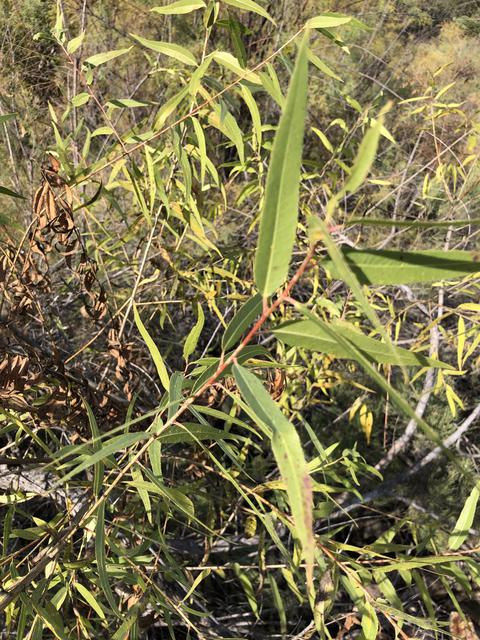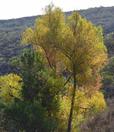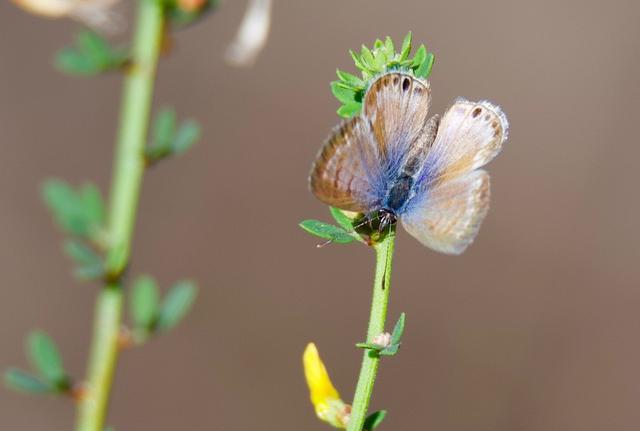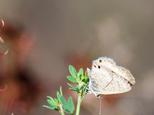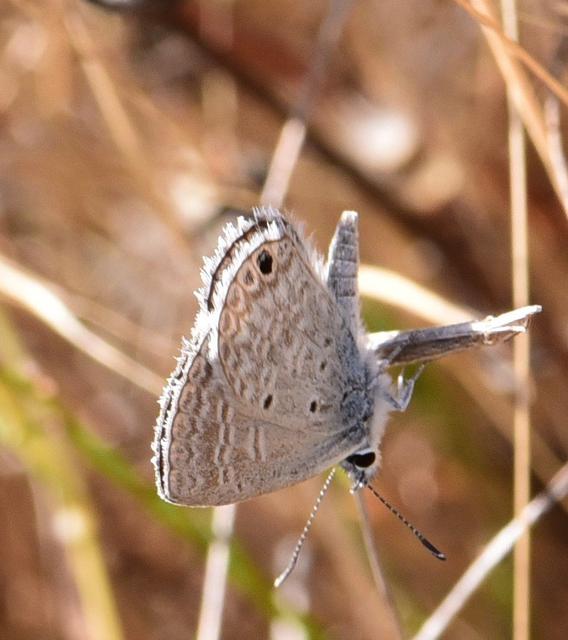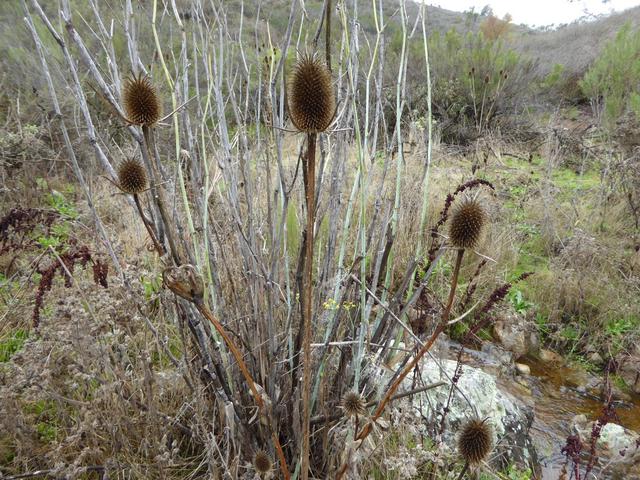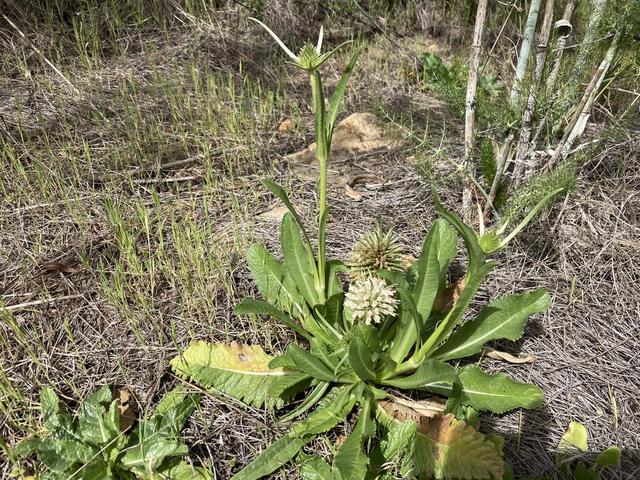Biopath Station 3 - Bancroft Creek Riparian Zone (Water loving) Willows, Butterflies and Invasive Teasel
Native Gooding’s Willow - Salix goodingii (Left: Leaf Detail - Photo: DHOSA, Right: Tree Aspect: Photo : BIOHEXX)
Native Blue Butterflies: Marine Blue (On Acmiscpon spp. Deerweed (formerly Lotus) Pea Family. Left 2 photos Photo: DHOSA , Ceraunus Blue - last photo (On Dry grass) Photo: DHOSA
Invasive Fuller’s teasel -
Dipsacus sativus is a biennial (family Dipsacaceae) found in California’s Coastal and Peninsular Ranges . It favors disturbed sites, including grasslands, roadsides, ditches and riparian sites. Fullers teasel’s spiny flower heads were used for carding wool before metal carding combs were created. Teasel plants may grow to form dense stands that are impenetrable by humans and animals. Teasel seeds can survive in the soil for 6 years or more, and once a dense population is established, it can persist for decades. Small populations may be mechanically controlled by removing plants to a few inches below the root crown. (source: Cal IPC) Image Below Left Dry Fruit, Image Lower Right Green Hairy Leaves, White Flower and Fruit (Photo Credit: Hiking San Diego) This section of Bancroft Creek has many 1000's of Fuller's Teasel Plants with the spiny fruit and stored seed. Removal of Fuller's Teasel and many other Invasive Plants is underway in Bancroft Creek and on Dictionary Hill Open Space Preserve . Please contact DHOSA(HomePage) for Volunteer invasive plant removal projects.
